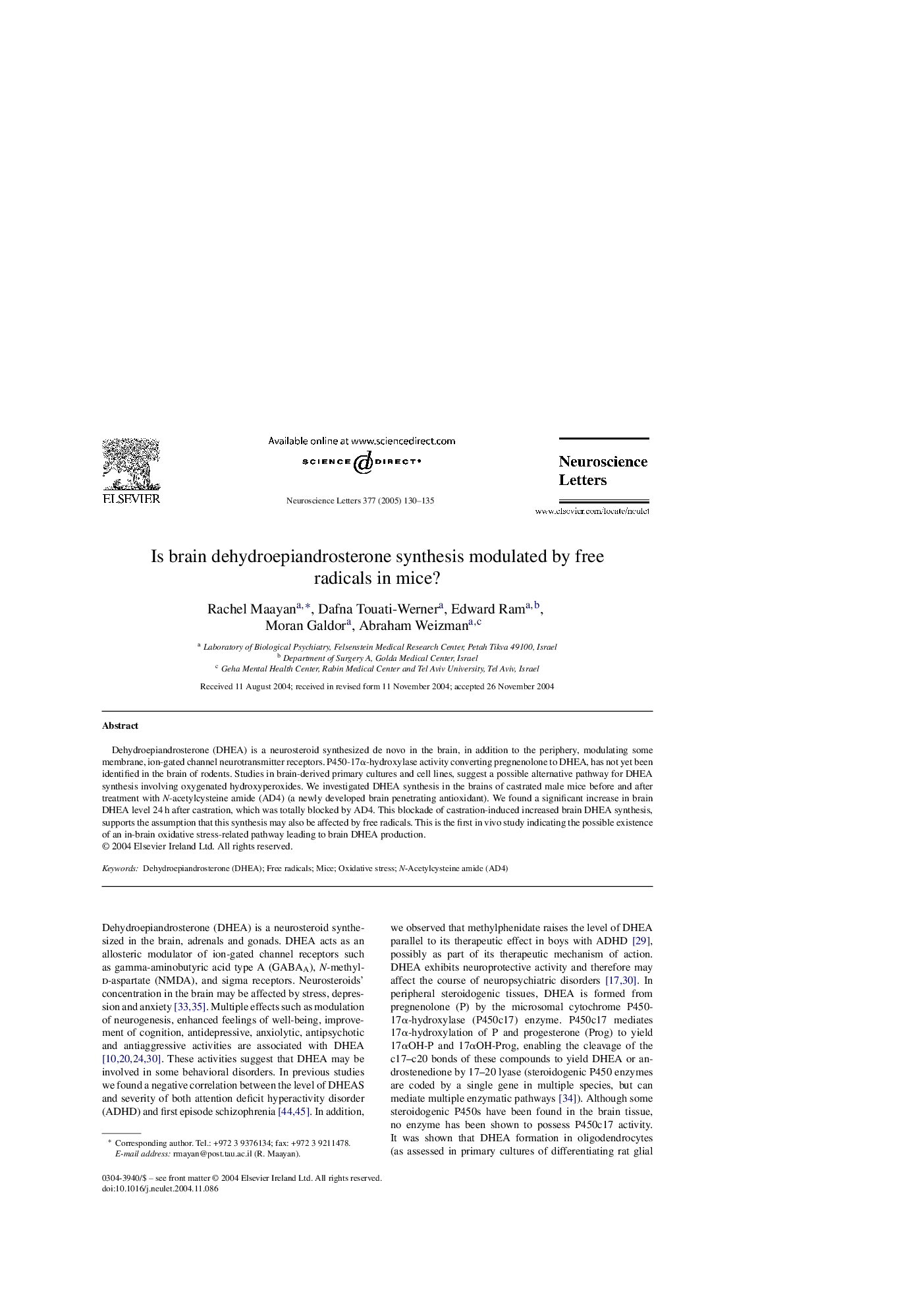| Article ID | Journal | Published Year | Pages | File Type |
|---|---|---|---|---|
| 9429643 | Neuroscience Letters | 2005 | 6 Pages |
Abstract
Dehydroepiandrosterone (DHEA) is a neurosteroid synthesized de novo in the brain, in addition to the periphery, modulating some membrane, ion-gated channel neurotransmitter receptors. P450-17α-hydroxylase activity converting pregnenolone to DHEA, has not yet been identified in the brain of rodents. Studies in brain-derived primary cultures and cell lines, suggest a possible alternative pathway for DHEA synthesis involving oxygenated hydroxyperoxides. We investigated DHEA synthesis in the brains of castrated male mice before and after treatment with N-acetylcysteine amide (AD4) (a newly developed brain penetrating antioxidant). We found a significant increase in brain DHEA level 24 h after castration, which was totally blocked by AD4. This blockade of castration-induced increased brain DHEA synthesis, supports the assumption that this synthesis may also be affected by free radicals. This is the first in vivo study indicating the possible existence of an in-brain oxidative stress-related pathway leading to brain DHEA production.
Related Topics
Life Sciences
Neuroscience
Neuroscience (General)
Authors
Rachel Maayan, Dafna Touati-Werner, Edward Ram, Moran Galdor, Abraham Weizman,
